Dozens and dozens of motorcycles pass through our doors every year. Test bikes arrive in vans, get transferred on trailers, get stored in “the cage” at the office and in our garages at home, and leave in the beds of pickup trucks. We’re awash in Battery Tender wires and tie-down straps.
Typically, test bikes sit quietly between test rides, resting their weight on sidestands or, if they have them, center stands. But sometimes, we need added security, especially when transporting a bike in the back of a truck or on a trailer. That’s where a dedicated motorcycle wheel chock, such as the Condor Pit Stop/Trailer Stop (PS 1500), comes in handy. Made of aluminum and weighing 30 pounds, the Condor unit comes mostly assembled. Just snip a zip-tie, pull a cotter pin, and everything goes together in just a minute or two. When not in use, it can be folded down for easy storage and it’s light enough to easily move around or load into the back of a vehicle.
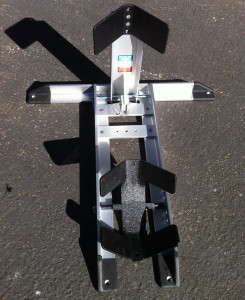
The base of the Pit Stop/Trailer Stop is shaped like a T, with rubberized feet at each end that help prevent the chock from sliding around. Attached to the upright post is a V-shaped channel, and attached to the long base is a patented, adjustable cradle. Condor says the unit is compatible with any kind of motorcycle up to 3,000 lbs. (heaven help us if we ever end up with 1-1/2 ton motorcycles!), with wheel diameters from 14 to 22 inches and tire widths from 80mm to 230mm. Adaptor kits are also available to secure the chock to the floor of your trailer or to attach it to an E-Track system (holes are pre-drilled in each of the three ends of the chock).
Recently I needed to bring a Husqvarna TR650 Terra back from a press launch in the back of a van. I used the adjuster pin to widen the diameter of the cradle to accommodate the 21-inch wheel, and placed the Pit Stop/Trailer Stop in the bed of the van on a heavy-duty rubber mat. As I rolled the bike into the back of the van, I directed it into the cradle, which rotates forward to hold the wheel in place. With the narrow 90mm front tire, the Husky rocked easily from side to side, but it stayed upright on its own. While in the cradle it was easy to secure with tie-downs, which I needed to use anyway to immobilize the bike for the 100-plus mile drive home.
Back at the office, I used the Pit Stop/Trailer Stop in the parking lot with Rider’s 1999 Honda Gold Wing GL1500 photo bike, which has an 18-inch front wheel with a 130mm tire. It rolled easily into and out of the cradle, and thanks to the wider tire, it felt more secure on its own, less likely to rock side to side even though it weighs more than twice as much as the TR650.
The Condor Pit Stop/Trailer Stop is a high-quality, American-made motorcycle wheel chock that is easy to use and provides peace of mind. It retails for $259.75 and is available through Condor’s website or its dealers.
FOR MORE INFORMATION:

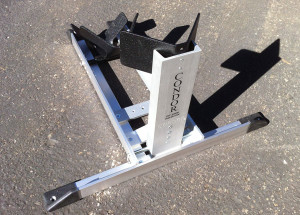
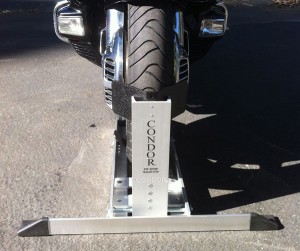
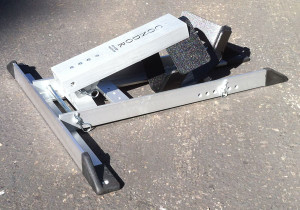
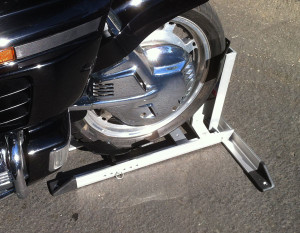







I recently a condor wheel chock (aluminum) for my GL1500. I have read on the website above that there might be an issue of the bike tipping.
Could you please email me back with any recommendations for pin settings or further adjustments I should make to ensure I have no difficulties.
I don’t want any issues with my wing.
Thanks
Rob Maxwell